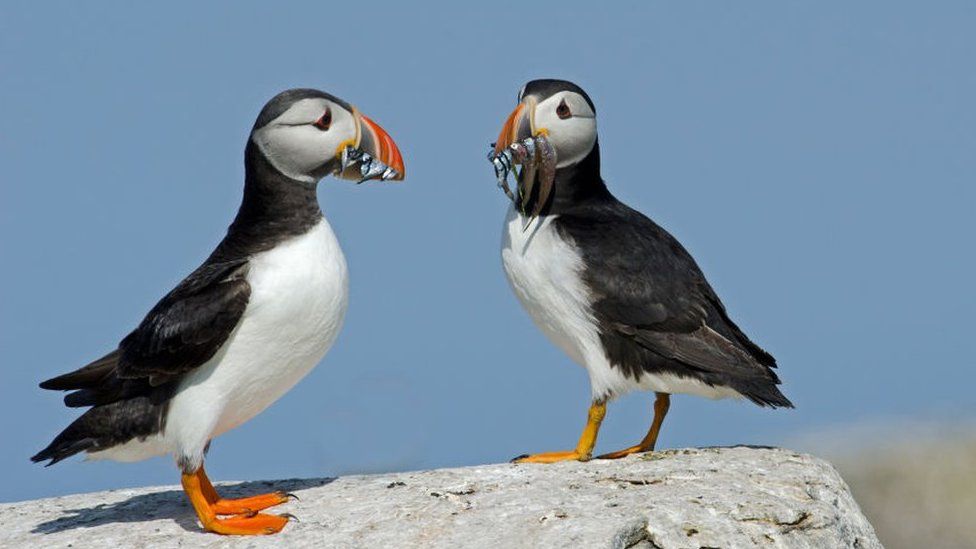Lundy Island's seabirds triple after rat removal
- Published

The number of seabirds on an island in the Bristol Channel has soared following the eradication of rats, conservationists have revealed.
There has been a boost in the numbers of Manx shearwater, puffins and guillemots on Lundy Island 15 years after a project to remove rats ended.
The RSPB said the number of seabirds on the island, off Devon, had tripled to 21,000.
The charity said the recovery had "far exceeded our expectations".
Helen Booker, senior conservation officer for RSPB, said: "This study clearly shows how quickly and positively seabirds respond to the removal of non-native predators.
"Of course, we had anticipated major population increases when the project was launched, but the scale of this recovery has far exceeded our expectations."
The project was launched in 2003 by Natural England, the Landmark Trust, the National Trust and RSPB, and aimed to eradicate the rats because they posed the biggest threat to the survival of the birds.
Island comes alive
Since Lundy was declared rat free the seabird populations have been steadily rising.
Before the study, there were 13 puffins on Lundy, down from 3,500 pairs in 1939 - there are now 375.
The Manx shearwater population has risen from 297 pairs to 5,504.
Lundy warden Dean Jones said: "It is exciting to see this level of recovery in Manx shearwaters, one of our most important seabirds.
"In spring the island comes alive at night with the sound of these amazing birds.
"The increases in puffins, guillemots and razorbills is also very encouraging for the future of seabirds on Lundy and we are maintaining our vigilance to ensure rats cannot return to the island."
- Published13 July 2018
- Published30 July 2013